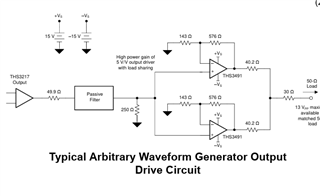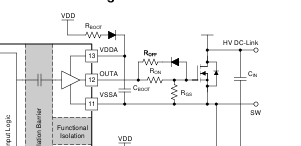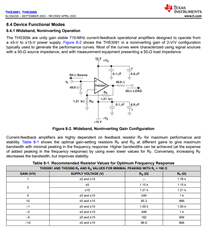Other Parts Discussed in Thread: THS3091, THS3095
Hello:
I am wondering if THS3491 can be put in unity gain as shown in the attached pdf file, drive low current load followed by another THS3491 driving into another low power load?
Our pulses are up to 12v/-5v in amplitude, with very fast rise/fall time up to Meg Hz max rate.
One side has unknown references as shown ( REFX), with supplies referenced to REFX. The other side is referred to std GNDS as shown.
Can this be simulated - or with any other very high slew rate wideband current feedback opamp using TINATI?
Any clarification will be highly appreciated.
-r




